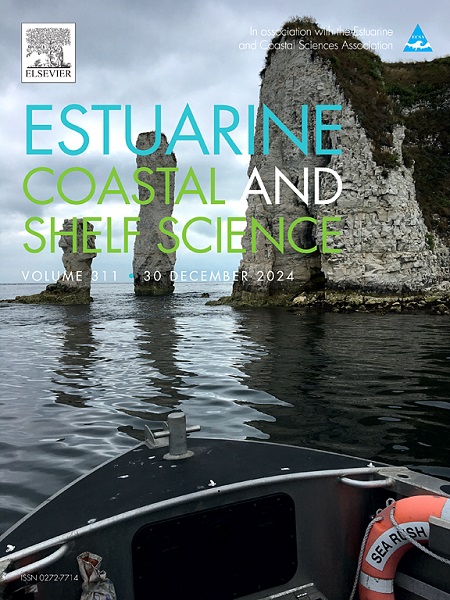Trajectories in soil surface elevation during tidal restoration of heterogeneous coastal wetlands
IF 2.6
3区 地球科学
Q1 MARINE & FRESHWATER BIOLOGY
引用次数: 0
Abstract
Coastal wetland restoration projects are increasing as the ecological importance of these ecosystems becomes more apparent. With sea-level rise, coastal agricultural land that was drained and closed off from the tide decades ago is becoming available for restoration of coastal ecosystems. Conversion back to coastal wetlands usually involves reconnecting tidal flows through the modification or removal of tidal gates. Knowledge of the links between differing levels of hydrological connectivity over landscapes, vegetation growth and soil surface elevation increments is limited but important for understanding changes in ecosystem functions with restoration. Using Rod-Surface Elevation Tables (RSETs), marker horizons, sediment pins and pressure loggers, we assessed how these factors combined to create different habitats within the Yandina Creek Wetland at the Sunshine Coast, Queensland, Australia. Over time, adaptive management strategies aimed at limiting tidal ingress onto adjacent land have led to high variation in tidal connectivity across the landscape. Monitoring hydrology, vegetation and soil surface elevation over four years found that duration of inundation and salinity were factors driving the establishment of mangroves, open water areas for birds and fish, and supratidal forests. Surface elevation and surface accretion within the restoration site were similar to that observed in adjacent reference sites, but were not correlated with the %time inundated, but instead by seasonal differences in rainfall. This research will assist future coastal restoration projects in similar drained landscapes.
非均质滨海湿地潮汐恢复过程中土壤表面高程变化轨迹
随着滨海湿地生态系统的生态重要性日益凸显,滨海湿地修复工程日益增多。随着海平面的上升,几十年前被排干并与潮汐隔绝的沿海农业用地正变得可用于恢复沿海生态系统。恢复到沿海湿地通常需要通过改造或拆除潮门来重新连接潮汐流。对不同水平的景观、植被生长和土壤表面高程增量的水文连通性之间的联系了解有限,但对理解生态系统功能随恢复的变化很重要。利用杆面高程表(RSETs)、标记层、沉积物销钉和压力记录仪,我们评估了这些因素是如何在澳大利亚昆士兰州阳光海岸的Yandina Creek湿地内创造不同的栖息地的。随着时间的推移,旨在限制潮汐进入邻近土地的适应性管理策略导致整个景观中潮汐连通性的高度变化。对水文、植被和土壤表面高度进行了四年的监测发现,洪水持续时间和盐度是推动红树林、鸟类和鱼类开放水域和潮上森林建立的因素。恢复地点的地表高程和地表增积与邻近参考地点相似,但与淹没时间无关,而是与降雨的季节差异有关。这项研究将有助于未来类似排水景观的海岸修复项目。
本文章由计算机程序翻译,如有差异,请以英文原文为准。
求助全文
约1分钟内获得全文
求助全文
来源期刊
CiteScore
5.60
自引率
7.10%
发文量
374
审稿时长
9 months
期刊介绍:
Estuarine, Coastal and Shelf Science is an international multidisciplinary journal devoted to the analysis of saline water phenomena ranging from the outer edge of the continental shelf to the upper limits of the tidal zone. The journal provides a unique forum, unifying the multidisciplinary approaches to the study of the oceanography of estuaries, coastal zones, and continental shelf seas. It features original research papers, review papers and short communications treating such disciplines as zoology, botany, geology, sedimentology, physical oceanography.

 求助内容:
求助内容: 应助结果提醒方式:
应助结果提醒方式:


